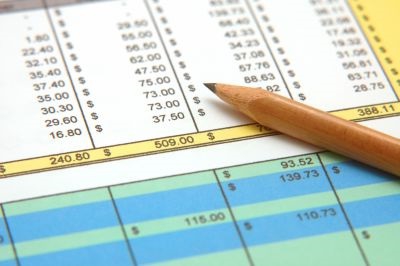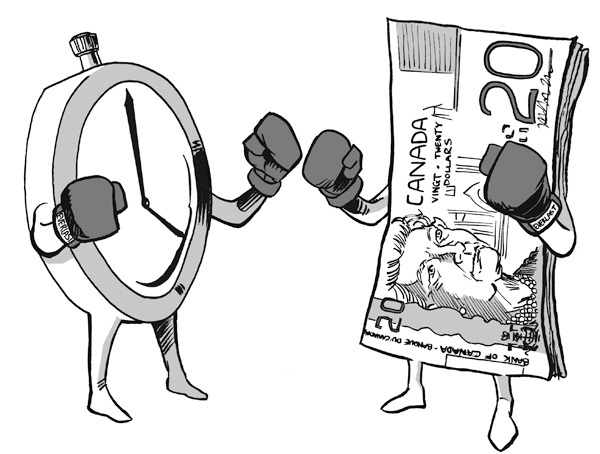An economic evaluation of an investment project reveals its attractiveness over alternative investments.
Need assessment

There are a number of reasons that make it necessary to use indicators of economic efficiency during the investment appraisal procedure, namely:
- If you intend to use, to some extent, a bank loan as a capital investment. The final results of the calculations according to the relevant indicators will make it possible to assess the possibility of its repayment in a timely manner, as well as to determine the degree of project stability in relation to the dynamics of the market situation.
- The ability to evaluate this project as one of a number of elements of ownership.
- The methods used to evaluate the investment attractiveness of various projects for calculating the relevant indicators play an important role in decision-making.
Assessment of the feasibility of financing
It is carried out with the time factor taken into account by the following group of indicators:
- net present value (NPV);
- payback period (PP);
- profitability index (IR);
- internal rate of return (GNI);
- modified internal rate of return (MVND).
The result allows the potential investor to get an idea of how soon he will be able to return the invested amount, what capital gains he expects from this investment and what potential stability with regard to market risks these investments have.
Interpretation of the concept of "payback period"
This is the period of time at the end of which the amount of invested investments is equal to the amount of income received from them.
Thus, the payback period of investments (Payback Period or abbreviated PP) can be represented as the time required for the return of all invested capital, after which profit begins to prevail over costs.

How to calculate the payback period?
This process can be represented in several stages, in particular:
- Based on the period in which profit began to form, and on the value of the discount rate, the discounted cash flow of the corresponding income is calculated.
- The calculation of the accumulated discounted cash flow is carried out. It is represented by the algebraic sum of the revenue stream of the corresponding project and costs. This action is performed until the first positive value is received.
- At the final stage, the payback period (PP) is calculated according to the formula:
PP = No. + Sn: DDP g.o., where
No. g.o. - the number of years that precede the payback year;
Sn - the value of the unreimbursed value at the beginning of the payback year;
DDP g.o. - discounted cash flow the corresponding payback year.
So, based on the existing information regarding the necessary costs and assumptions regarding future profits (on average), you can calculate the payback period of the investment project, that is, understand when the investor will return all the funds invested by him.
Formula for calculating the discounted payback period of a potential investment project

The above calculation of such an indicator of economic efficiency of investments as the payback period of a project does not take into account the fact of a decrease in the cost of money within the framework of the time aspect.
Thus, in order to obtain more accurate and reliable results, it is required to apply a discount rate in the calculations.
If there are alternatives, the investor will prefer a project that provides the shortest payback period.
What value should the considered indicator of economic efficiency of investments have?
Payback period capital investment acts as one of the main parameters that should be guided in the process of organizing an enterprise. As it was already explained earlier, this factor is the period of time necessary to cover the costs associated with the initial financial injections, income received from investing activities.

According to statistics, the payback period for investments in a company in most countries is 10 years. In Russia, it is most often substantially less. As a rule, entrepreneurs are aimed at obtaining the greatest possible profit in the shortest time.
Initially, the considered criterion of the company’s activity was calculated in the process of preparing a business plan, which is necessary for the creation of companies. The calculation of this indicator is based on various methods developed by highly qualified economists.
Already in the course of a firm’s business, the payback period may be overestimated depending on the speed of implementation of the plan or on the economic realities that have arisen. In this regard, the timing of a substantial profit by the company can be adjusted.
Why is this indicator calculated?
The payback period of a project can be used as one of their indicators, which acts as a guideline in making important decisions regarding the development of certain business areas.
It is known that more often than not, significant profit is required to make significant long-term investments. However, the investor and the company may not be completely interested in this development of the situation.
The discounted payback period of investment projects, so to speak, is more interested in those investors who carry out financial injections into the enterprise. The reason for this may be that banks that provide loans to commercial organizations, as a rule, are insured against possible losses through collateral. And investors in this regard bear significant risks when making investments in the enterprise.
Very often, investors make long-term investments in various fields (securities, companies), but there are many cases where investors prefer to maximize reduce the period of profit, even under high risks.

This indicator is the basis of one of the simple methods for determining the economic feasibility of financial injections.
In many years of practice, the procedure for evaluating the effectiveness of capital investments was carried out by means of five basic methods (without considering their modifications), conditionally combined into two groups: dynamic and simple (static).
Among the static methods for determining the economic feasibility of financial investments in investment projects, there are such as calculating the payback period of investments and calculating their accounting profitability. They are based on separate static values of the initial indicators, the basis for which is accounting estimates.
When applying them, the total life of the project and the degree of unevenness of cash flows arising at different time periods are not taken into account. However, these methods are very common because of their good illustrativeness and sufficient simplicity. They are mainly used for the operational assessment of an investment project at one of the preliminary stages of its development.
One of the above methods is based on an indicator called the payback period of financial injections. Its calculation is based on certain principles of the resource approach to the effectiveness assessment procedure.
The disadvantages of this method
The main negative point of this approach, aimed at determining the payback period, is that the profit is an indicator of the return on invested capital.But in practice, investments are usually returned as cash flow, which consists of the amount of depreciation and net profit. So, the assessment of an investment project based on profit substantially distorts the results of calculations and seriously overestimates the payback period of the initial injections.
Thus, the calculation of the payback period is recommended to be used exclusively as an additional method for assessing the appropriateness of financial injections. It should be used to obtain information that helps to expand the understanding regarding various aspects of the project being evaluated. The limited role of this indicator is expressed in the fact that if the investor indicated the term for the return on investment, and the payback period was more than the specified value, then this investment project is recommended to be excluded from attention.
Two options for using the indicator in the capital investment assessment procedure

Firstly, an investment project can be accepted provided that such a value of the final calculation result is obtained, at which it can be concluded that it will payback.
Secondly, the project is accepted if the value of the payback period indicator does not exceed a certain (set in advance) period, the value of which varies in a wide range in relation to individual firms. This indicates the absence of a unified normative value.
What justifies the preference for a discounted payback period for an investor?
The simple payback period for financial investments in an investment project is represented by the period of the usual return on invested capital through total net income. This indicator is not interesting to depositors because it does not indicate the number and terms of the possible receipt of an additional inflow of profit, which is the main goal of the investment project and the main reason for the further reuse of these incomes to pay off the corresponding debt from the financial crisis company.
The discounted payback period for financial injections is much more interesting for the investor in terms of the availability of information regarding the period that will be required to obtain additional profit on the investment project, commensurate with an alternative source of income having approximately the same level of risk.








